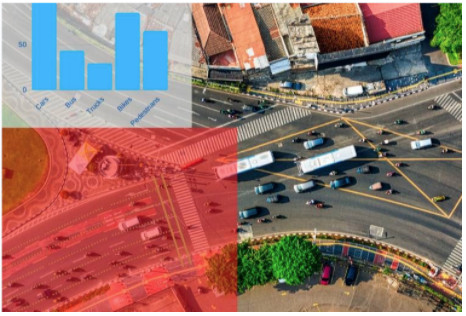Making surveillance smarter with Artificial Intelligence
We will see how advances in computer vision and neural networks have made our surveillance sector very smart, efficient and intelligent.
Gayathri Venkataraman

Surveillance and the usage of security cameras are widely prevalent in all industries around the world. These applications can range from theft and vandalism deterrence to traffic and weather monitoring and more. In many companies and industries, there is a separate department that works on security issues and surveillance videos. Surveillance industry has been around for many decades and has grown hand in hand with the advancement of technology and algorithms. With the advent of computer vision algorithms, we have made immense progress in making the surveillance industry more efficient and productive.
What are the real-world applications for this post-event and live event surveillance scenarios? For any application to be successful there must be a viable place to apply and it must be useful and relevant to the real world. Surveillance is also no different and we now dwell on the various places where these applications are really used. The most common scenario where live surveillance comes handy is intrusion detection. We mark certain geographical regions as a “no-go” region and monitor them strictly for any intrusion or break-ins. Once we detect an intruder, then alert mechanisms go active and protect the area. Another scenario is queue density detection where we monitor the “live” queue in retail sectors or service sectors. In our current pandemic scenario, where social distancing is crucial to remain safe, queue density monitoring gains a lot of value. If we find a breach in the queue density thresholds , then we can install additional service counters. We then start to dissipate the density, still maintain distancing and safety measures. Progress monitoring is also another area where live monitoring helps in analyzing the way the activity is proceeding and it helps to take appropriate measures to conduct it efficiently.

Going into real-world applications where post-event surveillance analysis is prevalent, the first thing that comes to our mind is vehicle entry checking at parking gantries. Here we attach the surveillance camera at the entrance and detect the license plate, make and model of the vehicle that is entering the parking space. We are able to perform an efficient dynamic car parking management by tracking the vehicles in and out of the parking space. We can make efficient adjustments and calculations with such information and we can make sure we account for every car. In such a model, we perform the number plate detection using a license plate module detection with neural networks. The number plate is localised and Optical character recognition is applied to translate the number plate and give you the result for the records. The make and model of the car are again processed by another neural network which is a classifier which takes the shape, badges on the tyres or bonnet for the recognition and makes an accurate detection for the same. We can apply many neural network models in order to gather valuable information from the parking gantries and make an efficient management system.

Retail video monitoring is another interesting area where surveillance plays an important role in effective service management inside stores or retail sectors. The cameras are fitted in different locations of the store and they record and understand the type of traffic coming inside the store. Once an area is having a lot of people coming in, then alerts can be triggered and more service personnel can come in and help the customers. This not only helps the customers who are looking for support, but it also helps you to efficiently manage your service personnel and allocate them in places where they can be really useful. Similarly, dynamic store management is another area where surveillance plays an important role to manage your store based on customer footfall. With the videos, we are able to analyse the number of customers coming inside, what time they come inside and in which products are they interested in. Based on their interest and demographics, a store can be organized effectively so that it becomes very convenient for the customers and also attracts more attention. Here we use a neural network to detect pedestrians so that they can track the customers, and a different algorithm is used to detect the demographics of the customers. A combination of neural networks is needed to perform different tasks so as to build an efficient and intelligent automated system.

A business, shopping mall or a home is always manned by security personnel. They usually skim through long hours of recorded or live video and monitor the events. This will cause fatigue and may cause skipping of important alert events. If we automate the system with intelligent recording, where we record only relevant streams and give alerts for any odd events or intrusions, it can reduce the fatigue. They can choose to dismiss or address the event based on the camera that is giving alert or based on the event that has occurred.

Another area that is gaining traction is traffic management. Of course, we don't want to spend our quality working hours huddled in a car with no place to move. If there can be a way to efficiently manage the traffic dynamically or according to the timings of the day, I am sure it will be a welcome scenario for everyone using the roads. With surveillance cameras on the traffic areas or congested roads, we can analyze the vehicle patterns, traffic patterns and road congestion situations. We can plan dynamic routes based on the patterns and calculate efficient alternate routes. We can divert traffic based on the judgement and analysis. Imagine having a dynamic route management system which can make sure you reach your destination on time without any hassle. Will that not be a relief?
We have now seen how advances in computer vision and neural networks have made our surveillance sector very efficient and intelligent. Automation and dynamic management of many sectors can ease the pain of having to go through laborious calculations. We can achieve more efficiency in every field, be it retail sector or road management or as simple thing as queue management.
Trusted Worldwide By Innovation Driven Companies







